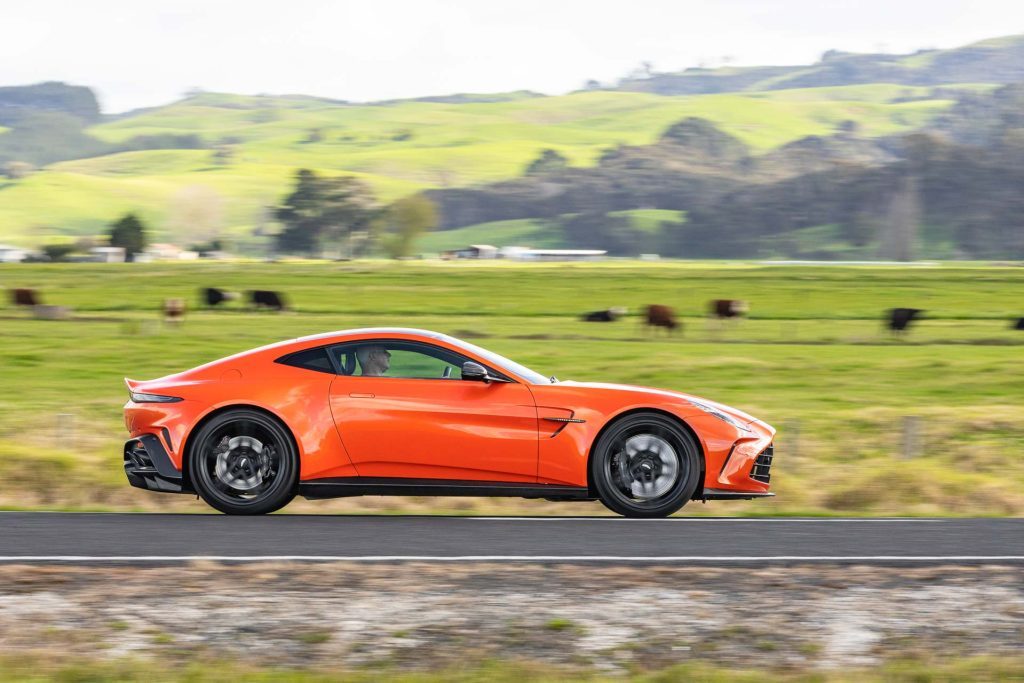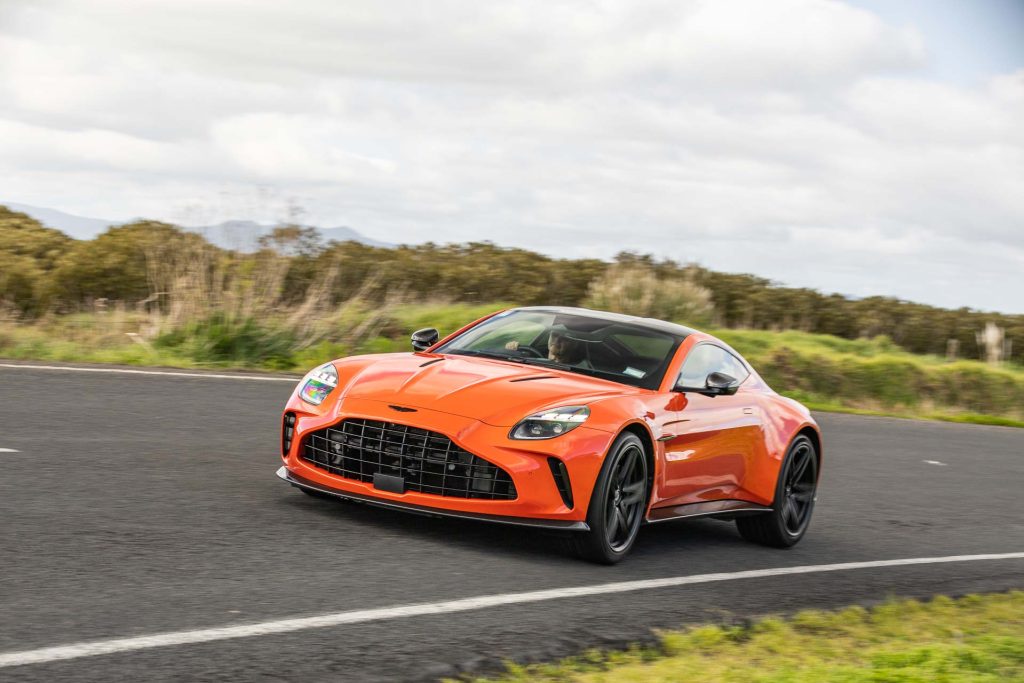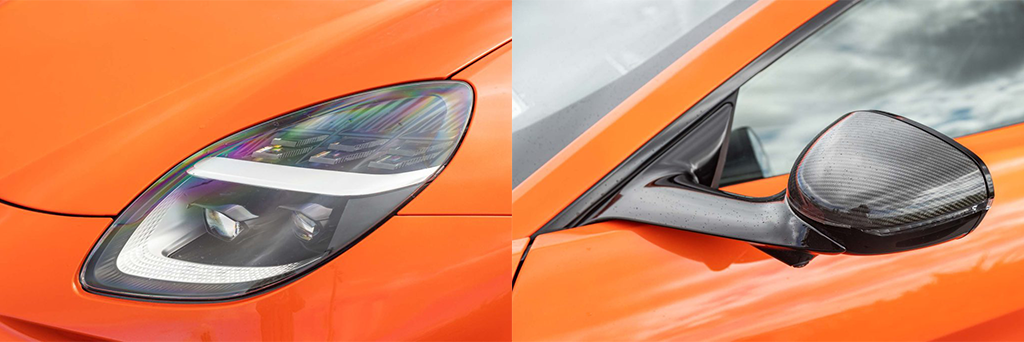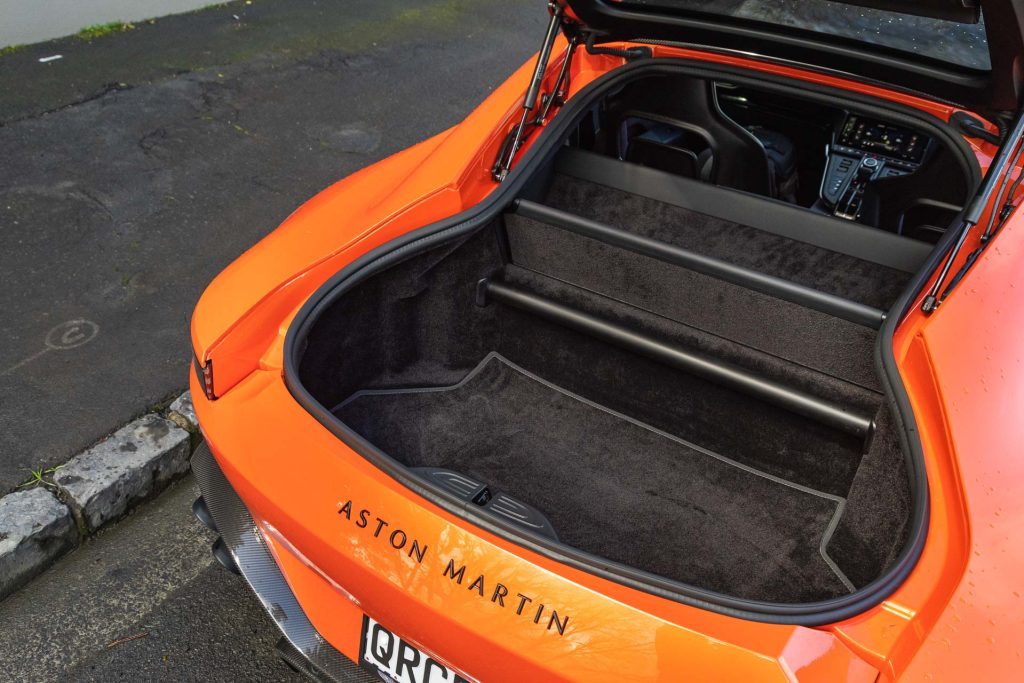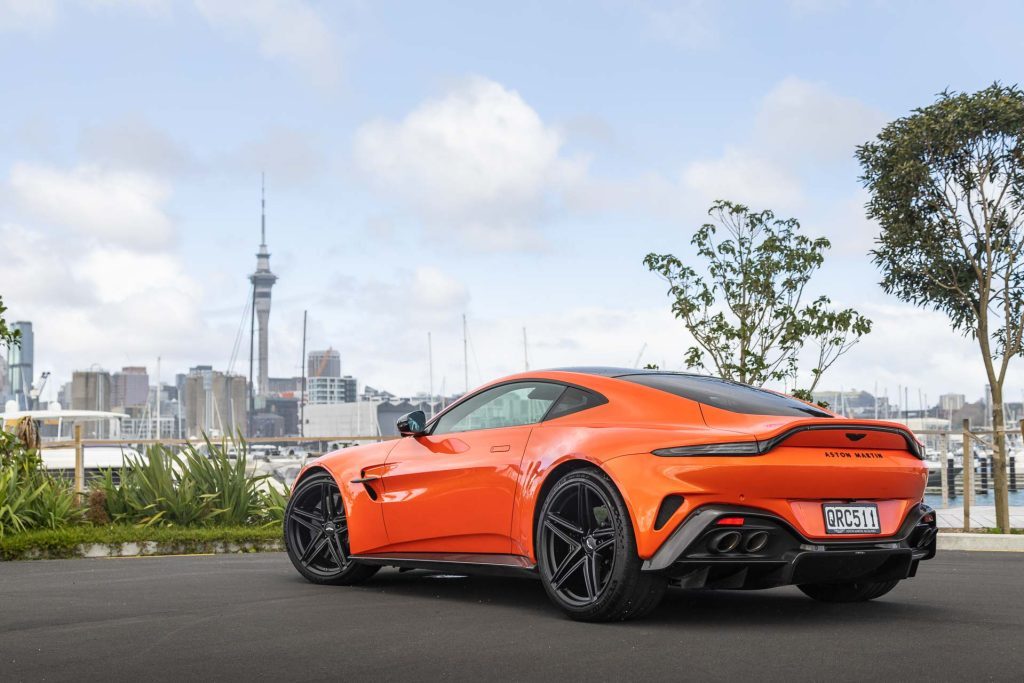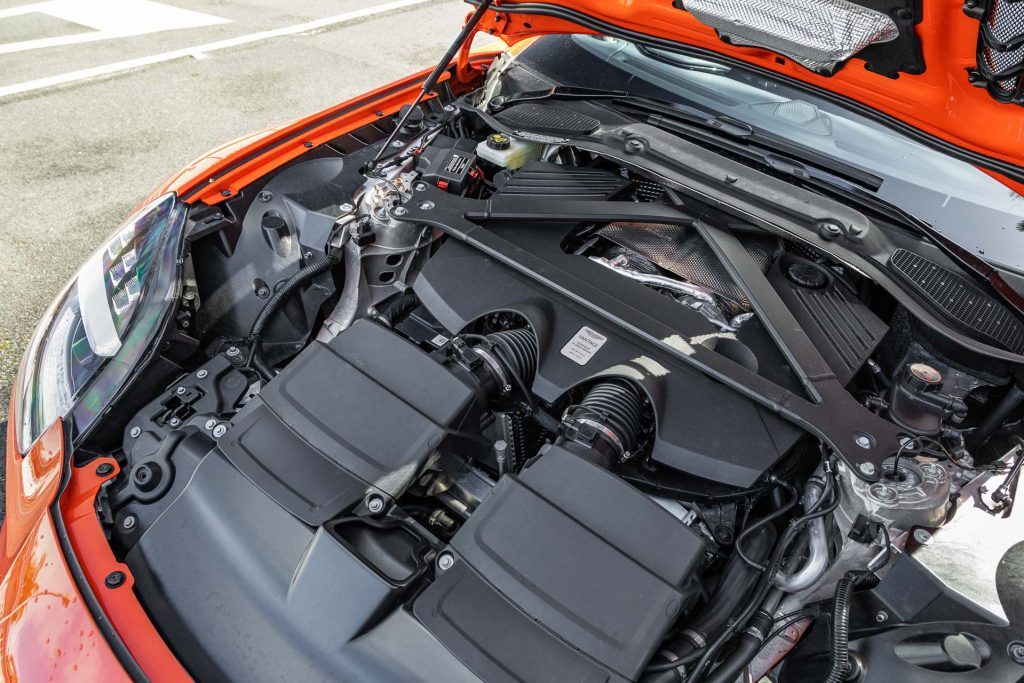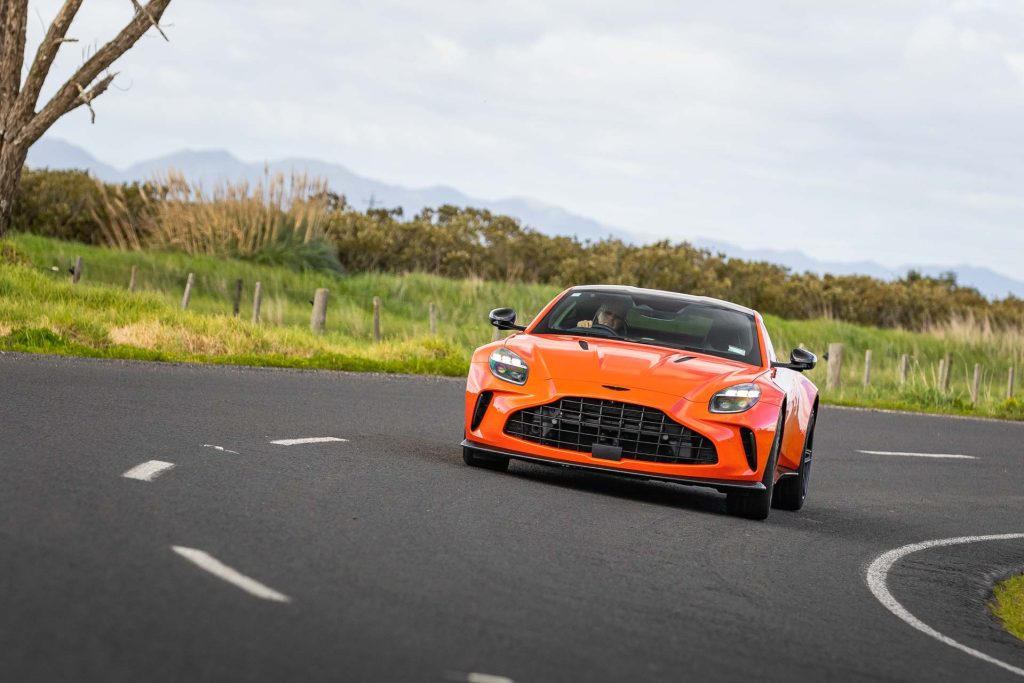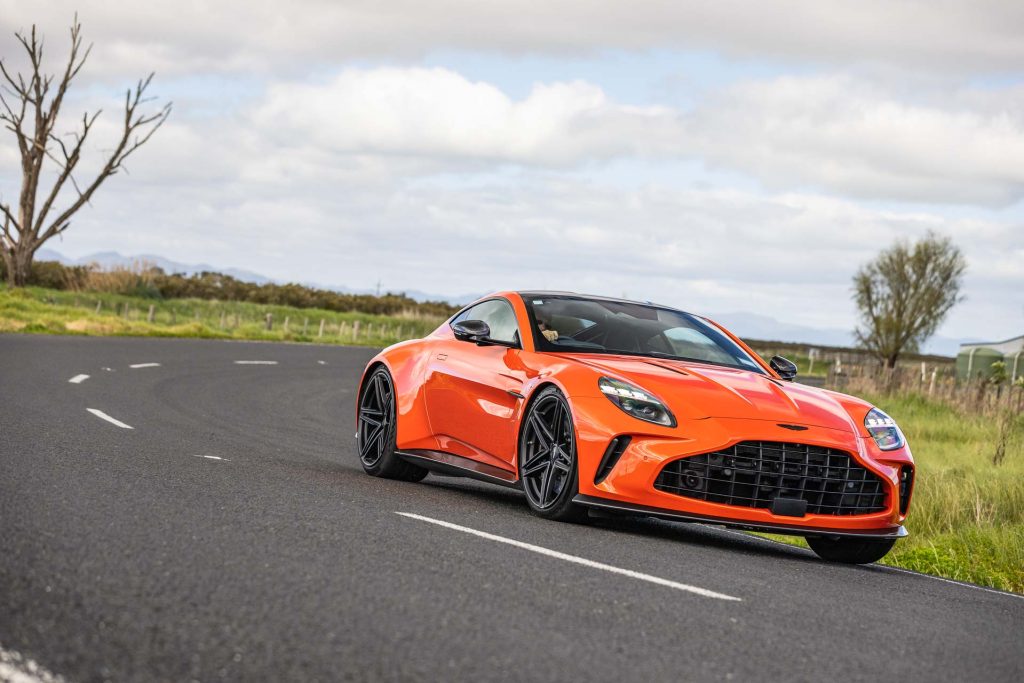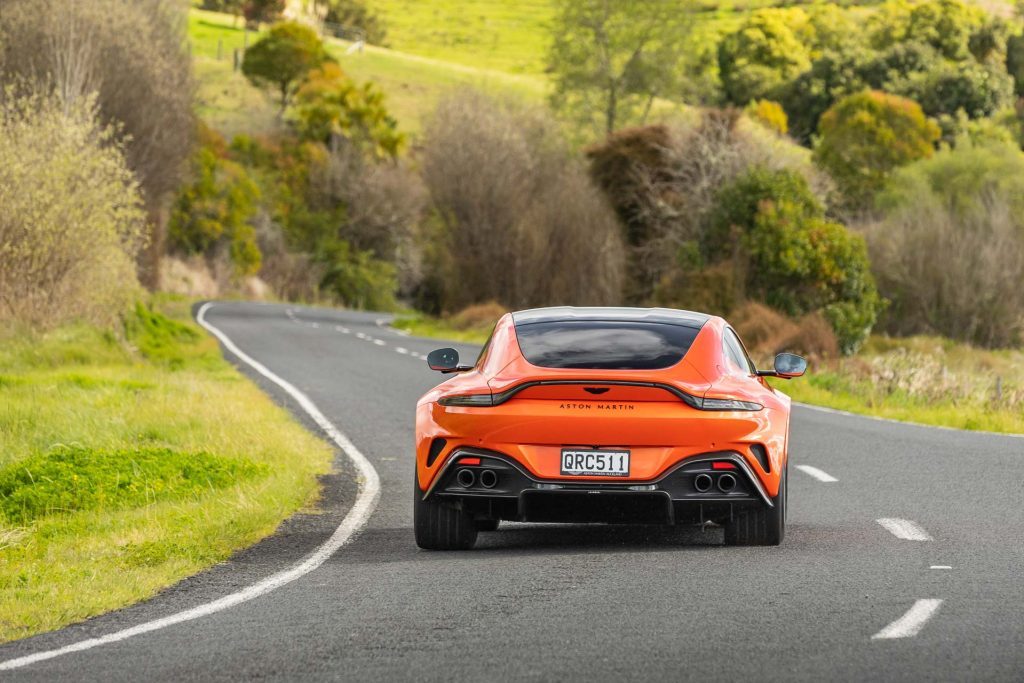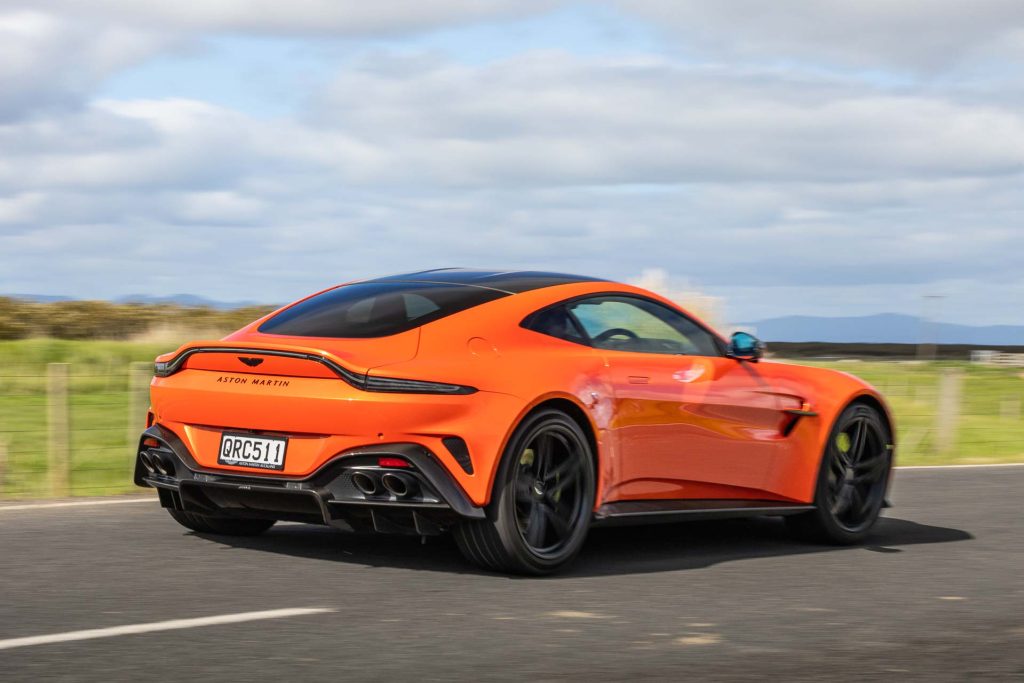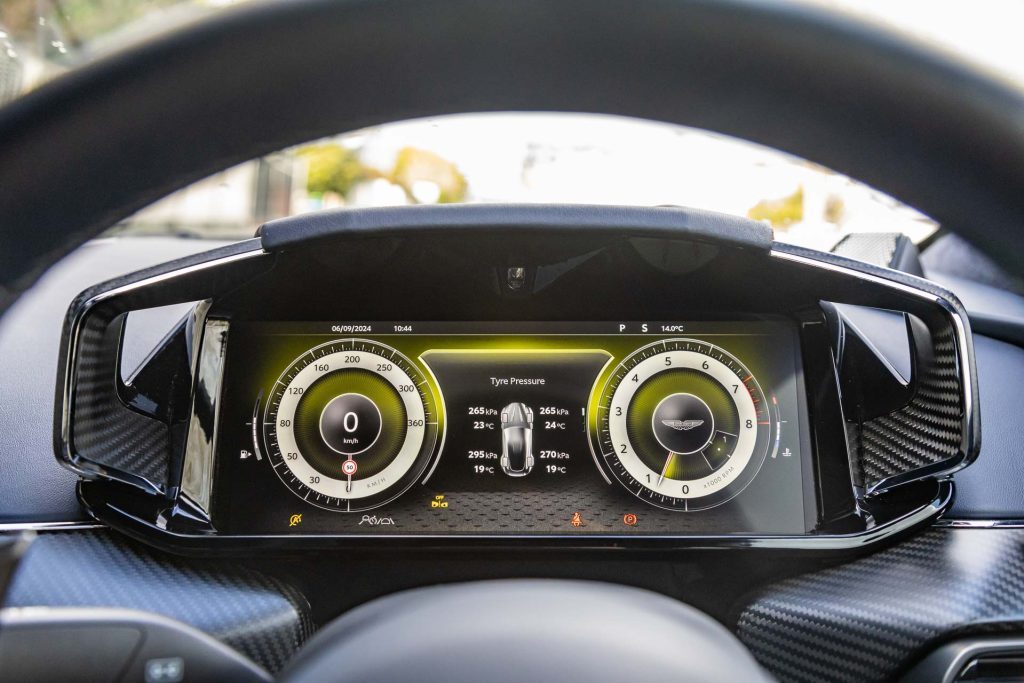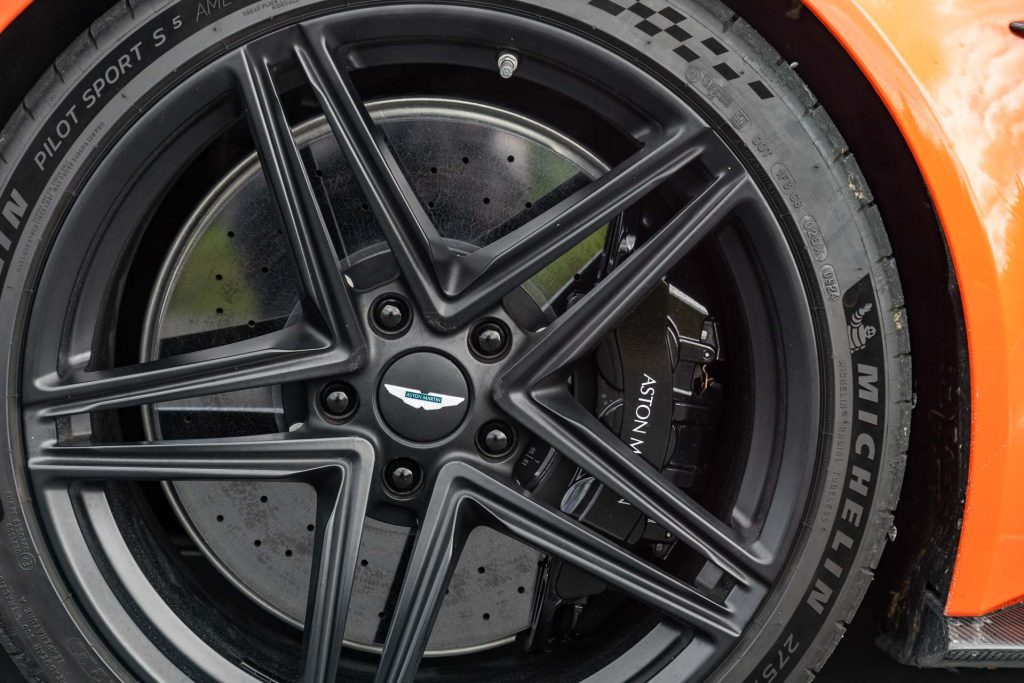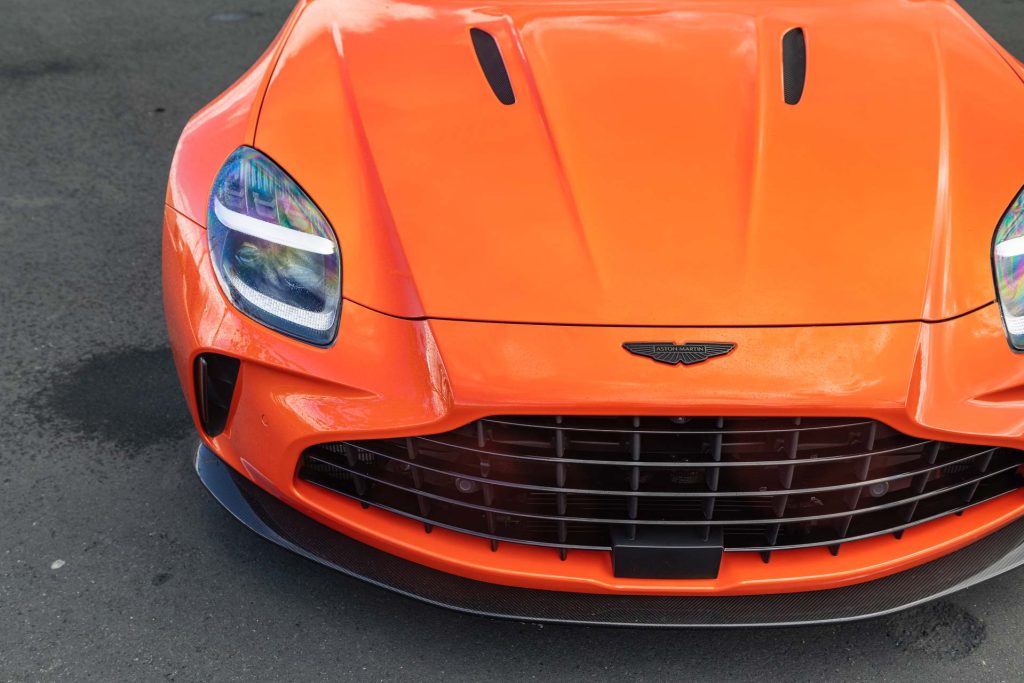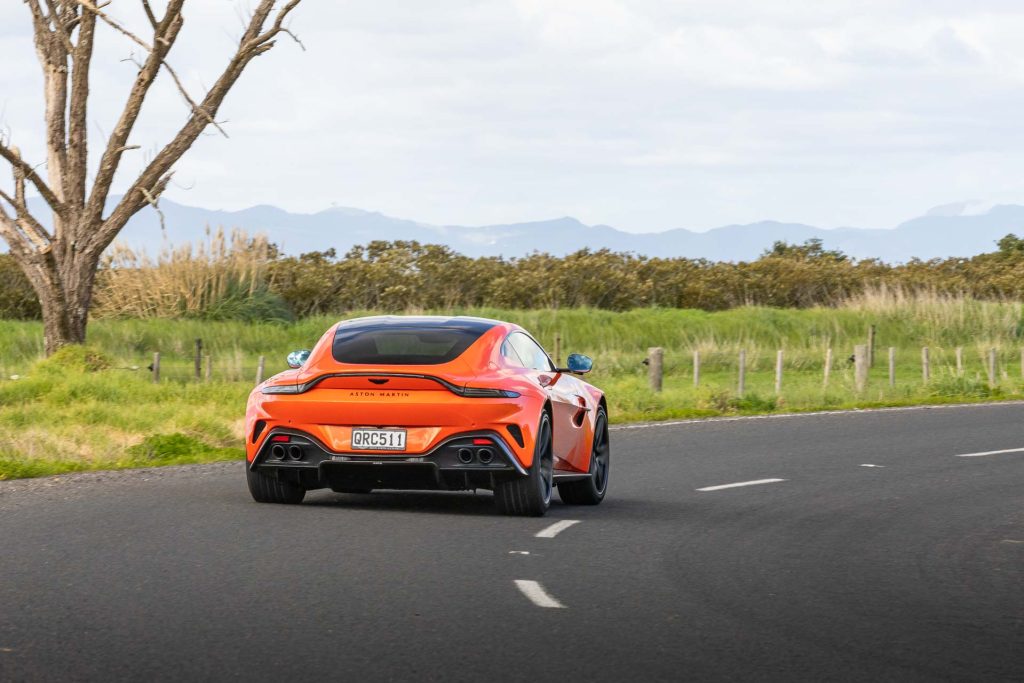2024 Aston Martin Vantage review
Aston Martin Vantage in its latest iteration, is wider, lower and features added power to take the fight to the 911s.

Back in the day the Vantages by Aston Martin weren’t really in the hunt against their natural foe, the 911, lacking in sheer acceleration and with odd transmissions. But that all changed in 2019.
Vantage got a twin-turbo powertrain, the output processed by an eight-speed auto transmission. It was the first Aston I’d piloted that was truly quick, and put it on a real footing with the 911.
Back then, it cost $250k but didn’t have adaptive cruise control. Now it has come in for a radical overhaul, and it gets ACC this time. And different style matrix LED headlights too.
It looks better, the grille 38 per cent bigger, the body wider by 170mm, more grounded and aggressive. Plus it comes with gobs more power but, like everything, the price has risen by, er, $125k to $375k.
Hell’s bells. But to be fair, the 911 it competes with is the Carrera GTS Coupe and that’s nudging $350k. Only the car we drove had more than a few extras.
For this pre-production press vehicle came adorned with all the available fruit, all $144k of it. They weren’t itemised but you can bank on the carbon ceramic stoppers costing at least $20k, and you’d probably pay about as much for the carbon fibre diffuser hanging off its tail.
Vantage Interior
Ditto the 1170wpc 15-speaker B&W sound system. The special paint job by Q mustn’t have come cheap either, and then there’s the lashings of carbon lining the interior.
On top of which the seats are carbon race items, not the comfiest I’ve encountered but they certainly do lock you in place. Not that they make entry and exit exactly a snip. Then there are the other carbon finishings on the outside of the vehicle.
The frameless carbon mirrors are a thing of beauty too. It looks sharp with the big black wheels, the burnt orange paint and those functional air tunnels.
People certainly notice this car. But then, they’d have to be deaf not to hear it first.
More power anyone?
Driving the sound is a motor that’s undergone a rather impressive transformation. It certainly closes the gap to previously quicker rivals. The Mercedes-AMG-derived 4.0-litre twin-turbocharged V8 used to produce 375kW and 685Nm.
But now it features new cams, heads, block and crank while with larger turbos the power output jumps by 30 per cent to 489kW while twist is up by 15 per cent to 800Nm.
And that all goes to the rear wheels; no AWD trickery here. Aston wanted to retain the rear-drive characteristics so beloved of keen drivers, and the steering purity uncorrupted by drive to the front axle.
They also made sure to shove the engine and transmission as far back into the engine bay as possible, ensuring a 50:50 front:rear weight distribution.
There’s launch control too and a locking e-diff to get the power down, a rapid fire eight-speed auto, additional underbody stiffening and new Bilstein DTX adaptive dampers. With its aluminium frame it weighs in at 1745kg wet.
What else to make it turn and burn? Michelin Pilot Sport S5 rubber, screeds of it, 275/35ZR21s to the north and 325/30ZR21s to the driving wheels. They really wanted this Vantage to be the most “driver focussed” yet.
School of quick
Turns out it is also the fastest Vantage in its 74-year history too, blazing to 100 from a standstill in a claimed 3.5sec which is hasty for a rear-drive vehicle.
The time depends largely on how grippy the surface is. On one of our regular flat tracks we couldn’t better 4.2sec, miles off, and slithering down the road. But nek minit around the corner where it’s smoother, it records 3.52sec, our best on the day.
But there was better to come, whistling up a 1.67sec 80-120 overtake. Only special cars stop the clock at under 2sec, possibly 20 have managed in as many years. So this is sick-quick.
But there’s also a side to this sporty two-seater that makes it more of an everyday car, providing you’re flexible enough to enter and exit this low flyer. And that’s the astounding torque it produces way down low in the rev range.
Oozing around town it upshifts way before 2000rpm in the everyday Sport mode (no Normal here because that would be too mundane). And it has all sorts of zones in between this and its top-end rush of acceleration.
It just builds progressively, the proper muscle kicking in at around 2000rpm. So even just using 3000-4000rpm, you have to be a little circumspect where you do this.
That low-end stomp also impacts on fuel consumption. From cold it quickly eased back from high 20s, and after a reset on the motorway the computer suggested 8L/100km at a constant 100.
Sure, it climbed some during our day but it never rose beyond 14.5L/100km, even after performance testing and to and fro driving for the camera.
Special stoppers
I shouldn’t have been surprised by the enormous carbon ceramic brakes but they are OMG amazing. Evidently the steel jobbies are very good too, but these are nek level.
And probably one of the optional items you really should consider, especially if you’re contemplating track days. Which you really should, given how brilliantly it goes on road.
There is simply an unending amount of stopping power here and a delicious feel at the pedal. They even seem to work well around town, and directly from cold. Clearly carbon ceramics ain’t what they used to be.
We haven’t really touched on the best bit yet either. This unwinds curling roads like you’d not believe. The front end is just stuck like it’s glued to a line, and the steering is beautifully weighted, quick on the turn.
You know the balance is right when pushing hard it refuses to squeal or run wide, all at gobsmacking corner speeds. Torque vectoring helps.
It may be the entry-level Aston but it’s the best handling model I’ve ever driven from the brand. Even the ride is sufficiently absorbent in the everyday Sport mode that it doesn’t jiggle your fillings out.
So, best Aston yet? Maybe, though we haven’t driven Valkyrie yet. That’s a joke by the way. If this isn’t quite enough for you, there’s always the GT3 variant…
Model
Aston Martin Vantage
Price
$375,000
Engine
3998cc / V8 / T / DI
Power
489kW@6000rpm
Torque
800Nm@2000-4000rpm
Drivetrain
8-speed auto / RWD
Fuel Use
12.1L/100km
C02 Output
274g/km
0-100km/h
3.52sec
80-120km/h
1.68sec (47.51m)
100-0km/h
33.60m
Stability systems
ABS, ESP, TV
Safety
AEB, ACC, BSM, LDW,
RCTA, ALK, AHB
Luggage Capacity
350L
Tyre Size
f-275/35R21 r-325/30R21
Fuel Capacity
73L
Service intervals
12 months/16,000km
Warranty
3 years/unlimited km
ANCAP rating
Not rated
Weight
1745kg (claimed)
This article first appeared in the October 2024 issue of NZ Autocar Magazine.
This article was originally published on autocar.co.nz
Also consider
